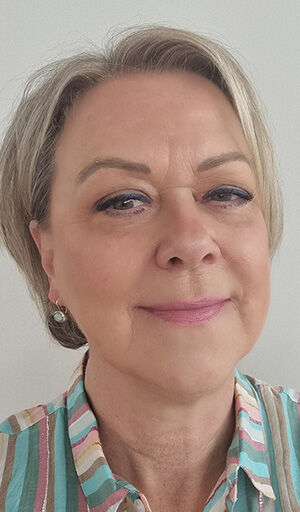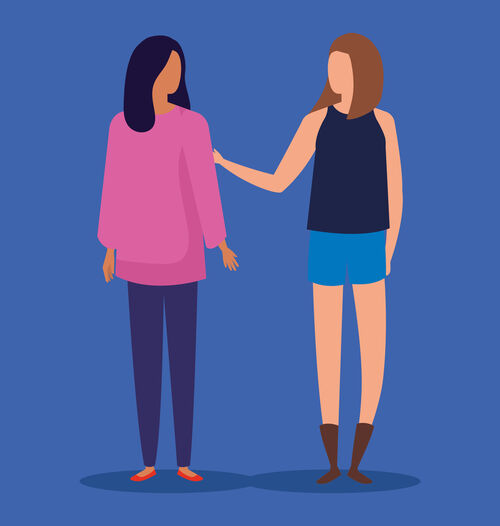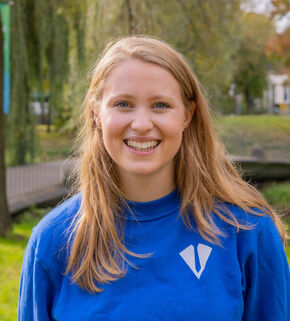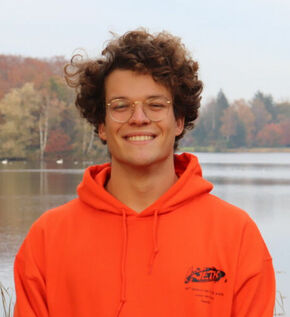
Students not finding their way to the many social safety contact points
About the current state of social safety among students
The fact that social safety of students is high on the agenda at TU/e is clear from the many initiatives and projects launched in this area. There are Confidential Contact Persons who are easily approachable for students, associations and umbrella organizations are working on a code of conduct, and Inge Adriaans, policy officer International Affairs at ESA, is writing a policy document to help improve students’ social safety. Nevertheless, it seems that students are not making much use of the available support so far.
Behind the scenes, umbrella organizations, the Student Well-being Network, student well-being officers, University Council faction members and policy advisors are working to improve social safety for students at TU/e. Thanks to their efforts, there are now many places students can turn to with their concerns; there is a flowchart available, which was published in 2021, that points them in the right direction. Yet it seems that students still cannot find their way to the help they need. Or do they simply not have any concerns? Adriaans, who is currently working on a policy document on social safety for students, which includes improving the flowchart and website, does not think that such a conclusion can be drawn from the fact that it remains relatively quiet at the contact points.
“It might be that they still don’t know where to turn or that they’re afraid to share certain experiences,” says the ESA policy officer. She says there should be a culture change at the university - and in the entire country - so students feel free to speak out. We’re currently working very hard on the administrative side of things: rules, directives and guidelines. Those are necessary, but we also have to focus on creating awareness about what we collectively do and do not tolerate and engage in a dialogue about that.” The code of conduct she writes about in her policy paper and which study and student associations are already working on should provide some help. According to Adriaans, many associations struggle with what exactly to include in such a document. Therefore, a generic document will be created to which they can add their own specific points which are relevant to the association.
Study associations
An inquiry by Cursor reveals that most study associations are actively working on social safety. For instance, board members have been appointed specifically to deal with student well-being (which includes social safety), associations are organizing discussion hours and workshops, and some associations also have their own confidential counsellor. Most student associations are aware that they do not have enough in-house knowledge to help students with major problems, but they do consider it their job to act as the first point of contact and refer students to the right help. They are also devoted to creating an open culture and all associations are working on the aforementioned code of conduct.
CCPs
On top of that, there are Confidential Contact Persons (CCPs): students who have undergone training to serve as confidential counsellor. Although they are sometimes affiliated with study or student associations, any student can approach them for a conversation. Students who are concerned about a friend or classmate can also turn to them. According to Student Diversity Officer Lara Hofstra, a total of about 30 reports have been made to the 25 CCPs this year, although most of them were related to well-being. By this, she means students who were not feeling well or were struggling with burnout complaints, for example.
Student at Built Environment Arjun Tyagi, who is in charge of the Student Wellbeing Network (SWeN) and is a CCP himself recognizes that image. The students he spoke to in that capacity mainly struggled with (academic) pressure and loneliness. The fact that no one came to him with social safety-related problems does not necessarily mean that there aren’t any, he says. “I personally consider the university a socially safe place, but I'm also a pretty extroverted person. I can imagine that the situation would be different for you if you’re not. I also see that sometimes problems can arise between students because of a language barrier or cultural and social differences.”
According to Tyagi, associations are taking the right steps, but a recurring problem is that only students associated with those associations benefit. “It’s very difficult to reach the “regular student”. I don’t know how they feel about the campus and about student life and whether they feel at home. We really have to change that. We’re thinking of visiting compulsory first-year courses and presenting the CCPs there, among other things; we’re going to roll that out next academic year.”
According to Adriaans, TU/e's generic code of conduct should in any case include the university's basic principles of what is or is not acceptable behavior, what the rules and protocols are for reports and how to ensure that all available support can be easily found. “I call it a framework. That is what we have to develop for the university, students, staff and also for external visitors. So that everyone knows their responsibilities.”
Hierarchy
Views on acceptable social behavior are divided within the university, which makes it challenging to work on such a framework, Adriaans says. “Those differences exist between students, but also between cultures. There are many international students here who may think very differently about certain things, such as hierarchy, for example. For example, while a Dutch student might not accept something from a lecturer, a Chinese student might respect it because of the hierarchical position.” Even among themselves, Dutch students can experience situations very differently, Adriaans emphasizes. These differences, she says, can also stem from students’ upbringing or what they have experienced in the past.
That makes it difficult for the university to structure something that ensures a safe and comfortable feeling, something that applies to everyone, Adriaans explains. “I am becoming increasingly aware of how diverse the university is. You have to decide for yourself and with the people around you where the boundaries lie and what is or is not desirable.” Therefore, she is not writing the policy document, a preliminary first version of which is now complete, on her own. She also submits it to various bodies. For example, the ESA management team has already provided feedback and she met with the Education Board - which includes the deans of the Graduate School and Bachelor College. “I’m also going to talk about it informally with the SWeN and the Student Advisory Body, which is the consultation the rector holds every once in a while with a representation of both Dutch and international students. I’m going to ask them very specific questions too, about what is still missing and if something needs further attention.”
University Council
After the summer, Adriaans hopes to be able to submit the document to the Executive Board and the University Council for their approval. Within the UC there is also a well-being committee, which includes students Anne Karien van der Stee (of DAS) and Lucas van Bentum (of Groep-één), among others. They monitor from within the UC what is happening in the areas of well-being and social safety at the policy level and contribute ideas about plans related to these areas. Van Bentum: “During meetings with policy makers such as Corlien van Dam and Inge Adriaans, for example, we can contribute to policy that ties in with students’ needs.”
Van der Stee and Van Bentum regularly visit student associations to discuss social safety. The factions also organize initiatives on this topic themselves. For example, this year, DAS is organizing its second ever Social Safety Lunch for associations to exchange ideas among themselves and Groep-één is working on an “Angel Shot” initiative for the Intro. The students think it is a good thing that there will soon be an ombudsman for students, and they are both convinced that a culture change is needed.
What is social safety?
Although it has mainly been sexual transgressive behavior that has been in the spotlight lately because of #metoo and cases like The Voice, Adriaans says social safety is about much more than that. “Bullying behavior falls under it as well. And whether you feel you’re being addressed in a correct way. You can also feel belittled in a class or project, or excluded.” And students are not just "victims" but can also - sometimes unintentionally - be the “perpetrators” of undesirable behavior. That is why Adriaans says it is important to raise awareness and talk more about such issues.
The fact that there are only few reports of social safety-related problems among students does not mean that there aren’t any, UC members Van der Stee and Van Bentum say. There are stories going around. Van der Stee: “They may not be high percentages, but even one percent is too much. And if you look at Amnesty International’s manifesto on rape among students, the numbers are really shocking. So the fact that you don’t hear about it right now really doesn’t mean that it doesn’t happen. Also, especially when it comes to things like rape, sometimes people don’t realize what actually happened to them until later.”
Not heard
In her own environment, the main problem she sees in terms of social safety is that people don’t feel heard. “That’s often about small things, but it does happen a lot. What you also hear is that something went wrong in someone’s past and they’re still not being heard or that people don’t know where to turn to.” That is why she thinks it is a good thing that there are enough contact points for when something goes wrong. Van Bentum agrees. “Think of it like a safety belt: hopefully, you’re never actually going to need it, but it should be there just in case. The same goes for a student ombudsman, confidential counsellors and CCPs.” But what the university should be focusing on above all, according to the student, is ensuring that it simply does not happen. “You have to actively look for ways to prevent socially unsafe situations.” And that is exactly what Adriaans wants to contribute to with her policy document, which Van der Stee and Van Bentum may start reflecting on after the summer.





Discussion